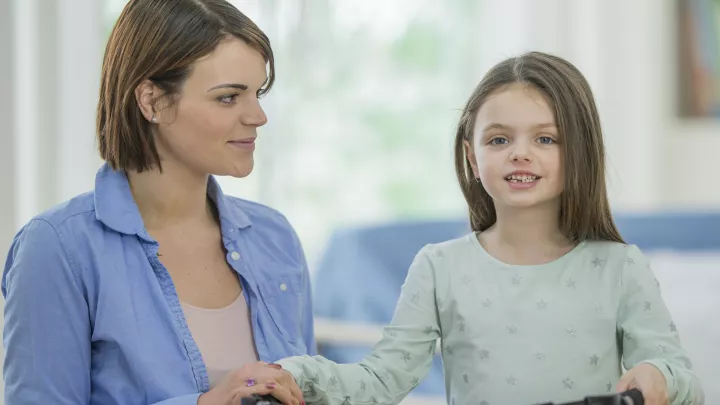Brachial Plexus and Peripheral Nerve Treatments
At the West Coast’s largest Brachial Plexus and Peripheral Nerve Program, we’re highly successful at helping children regain feeling and movement in limbs. We specialize in nonsurgical and surgical treatments for brachial plexus and peripheral nerve conditions, as well as acute flaccid myelitis (AFM).
Nonsurgical Treatments for Brachial Plexus and Peripheral Nerve Injuries
At Children’s Hospital Los Angeles, we always start with the least invasive treatment. Some peripheral nerve problems improve without treatment. Children can regain function through:
- Occupational therapy: Your child receives occupational therapy from specialists who have advanced training in peripheral nerve injuries. We teach you how to perform stretching and movement exercises at home with your child.
- Splinting, casting and bracing: Some children lose joint flexibility when their limbs don’t move properly. Splints, casts and braces hold shoulders or arms in the right position to keep joints flexible. Lightweight, removable casts and braces allow you to complete stretching and strengthening exercises with your child. We have on-site representatives from bracing companies to ensure the best fit.
Surgical Treatments for Brachial Plexus and Peripheral Nerve Injuries
If occupational therapy doesn’t help, or nerves are completely damaged, we offer the latest surgical treatments. Surgeons at our nationally ranked Jackie and Gene Autry Orthopedic Center perform a high number of peripheral nerve surgeries every year with exceptional results. Our acute flaccid myelitis (AFM) program specializes in nerve transfer surgeries.
Our dedicated nurses guide your family through the surgery and recovery process. After surgery, your child may need a brace or splint, in addition to physical and occupational therapy.
Surgical treatments may include:
Nerve repair and grafting
When possible, we reconnect severed nerves (nerve repair). If the damage is too severe we may perform a nerve graft.
During this procedure, your child’s surgeon:
- Removes a nerve that controls sensation (sensory nerve) from your child’s calf or arm. Residual numbness in this area should be minimal and often improves over time
- Uses the sensory nerve to bridge the gap between the ends of the injured nerve
Over time, as nerve signals “grow” across the graft, function should return. Occupational therapy helps.
Nerve transfers
We perform nerve transfer surgery to help children with complete loss of muscle function and sensation from AFM. Our surgeons move healthy nerves from one muscle to another muscle. The transferred nerves take over the function of injured ones.
For some children, such as those with AFM-induced muscle weakness or paralysis, our surgeons transfer breathing nerves to affected limbs. Typically, breathing nerves control actions like coughing and whistling. Initially, your child may have to take a deep breath to move the treated limb. A child’s brain quickly adapts to this change. Soon, your child will move the limb without thinking about it.
Muscle or tendon transfers
Tendons (connective tissues) and muscles respond to nerve signals to make movements. A muscle or tendon transfer helps children who have muscle loss or weakness that nerve surgery can’t fix. During the procedure, a surgeon moves nearby unaffected muscles to take over the functions of weakened muscles. It’s an effective treatment for certain hand and arm injuries, foot drop and spine injuries.
Bone surgery (osteotomy)
Some children with brachial plexus or peripheral nerve conditions have muscle imbalances that cause abnormal bone growth. Your child’s doctor may recommend a bone surgery called an osteotomy. The procedure repositions bone to improve movement and function.


